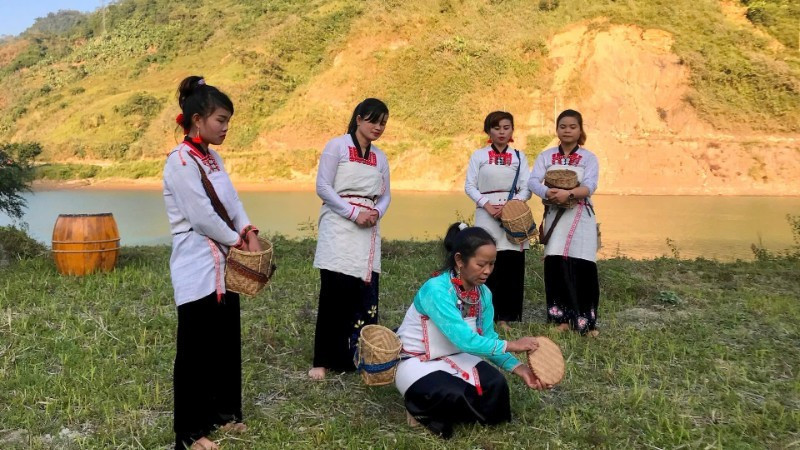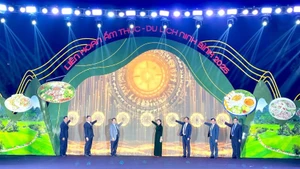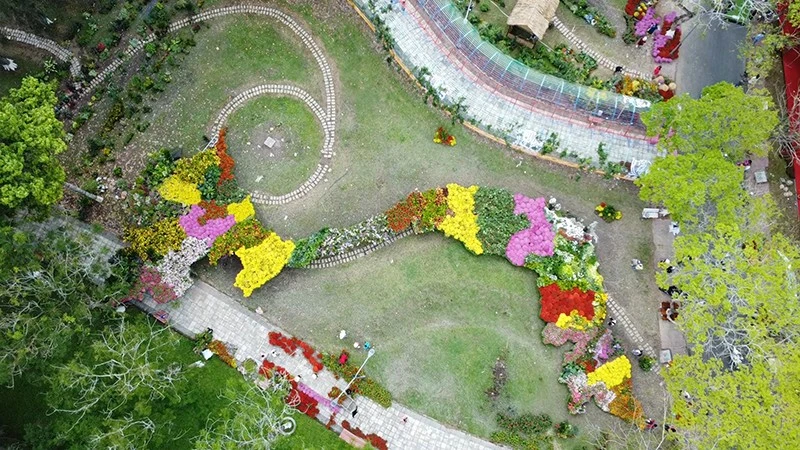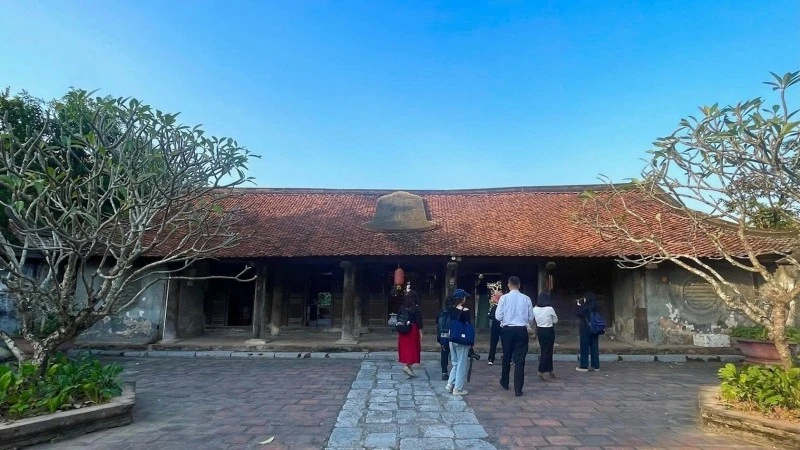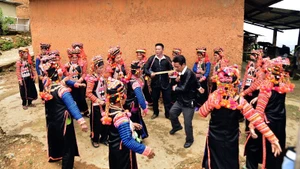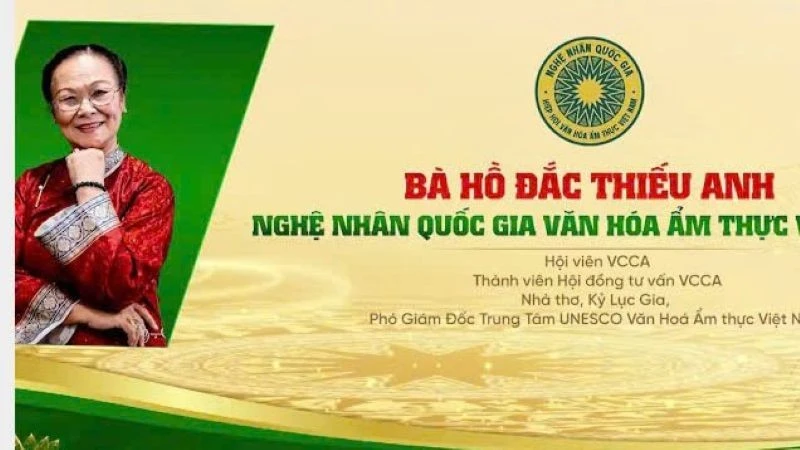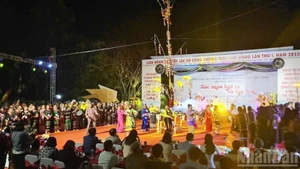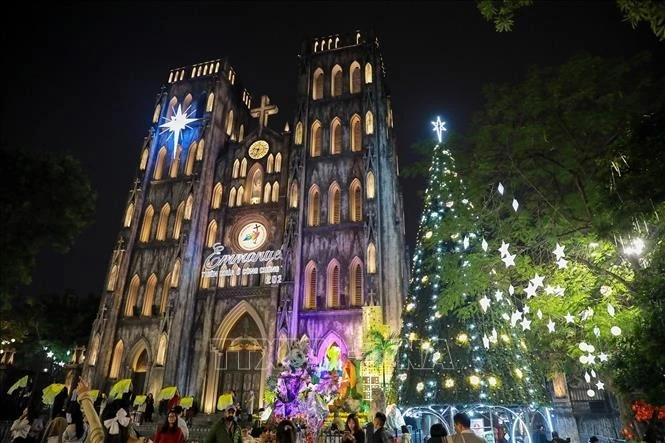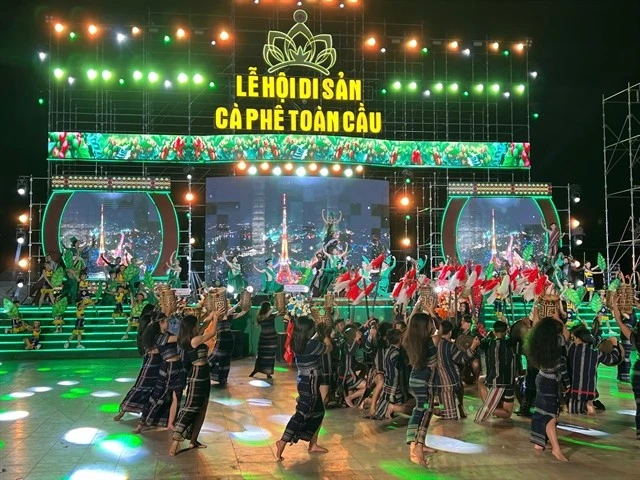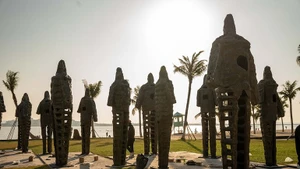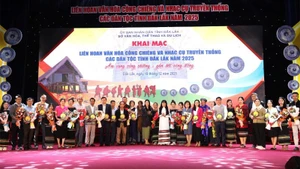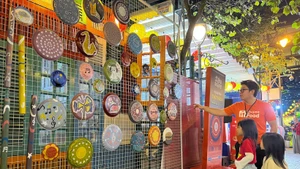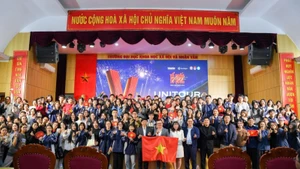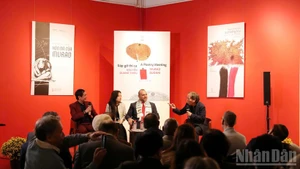Project No. 6, “Preserving and promoting the fine traditional cultural values of ethnic minorities in association with tourism development”, and Project No. 9, “Investment in the development of very small ethnic groups and groups still facing many difficulties”, have enabled the community to access social services, foster economic development, and revive and safeguard many traditional customs, festivals and cultural practices.
The road leading to Nam Sao 1 village (Pa Tan commune, Lai Châu province), home to a large Mang population, is now lined with many new and spacious stilt houses. From the entrance to the village, the sound of flutes and singing from the local art troupe rehearsing for National Day (September 2) celebrations enlivens the atmosphere. The troupe, with 15 members, meets to practise after work in the fields, under the guidance of artisan Lo Thi Chuong. They actively perform at festivals and local cultural and sporting exchange events.
In the past, life was hard and our only concern was food and clothing. Now the village has changed; the local authorities have opened cultural training classes and set up an art troupe. We have come to realise that the Mang people possess many beautiful and meaningful songs and dances. Each performance or exchange makes us prouder of our ethnic traditions.
Lung Thi Lan, member of Nam Sao 1 village art troupe
Lung Thi Lan, member of Nam Sao 1 village art troupe, said “In the past, life was hard and our only concern was food and clothing. Now the village has changed; the local authorities have opened cultural training classes and set up an art troupe. We have come to realise that the Mang people possess many beautiful and meaningful songs and dances. Each performance or exchange makes us prouder of our ethnic traditions.”.
Speaking about the cultural training classes, Ly A Lau, head of Nam O village and a respected figure among the Mang, said: “These classes attract many young people, which is a positive sign. Some even have ideas for start-ups based on brocade and traditional bamboo weaving linked to tourism development.”
Each class usually has about 30 learners and is mainly taught by artisans from villages of Mang and Cong ethnic people. For classes on the Mang language, staff from the Vietnam National Institute of Culture, Arts, Sports and Tourism often join the teaching.
Artisan Lo Thi Chuong (Nam Sao 1 village, Pa Tan commune) remains deeply committed to safeguarding Mang culture. Concerned that traditional values might be forgotten, she has devoted much time and effort to collecting musical instruments, recording songs, dances and rituals of the New Rice Festival. Entrusted with teaching classes on folk performing arts and traditional costume-making, she shares her knowledge and experience wholeheartedly, while instilling in young learners a love of and pride in their cultural identity.
In addition to cultural and artistic training classes, thanks to Project No. 9, the Mang people’s New Rice Festival has been revived since 2023 and maintained regularly ever since. This festival carries spiritual significance, praying for good harvests and peace for the village.
From 2024 to June 2025, in the communes of Le Loi, Pa Tan, Nam Hang and Muong Mo (Lai Chau province), more art troupes have been established and dozens of classes organised by the local authorities. These include training in traditional folk performing arts; oral teaching of ethnic languages; traditional costume-making; and the teaching and production of traditional crafts for the Mang and Cống peoples.
